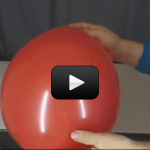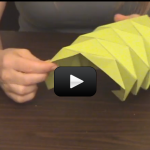If I asked you to define the word force, what would you say? You probably have a feeling for what force means, but you may have trouble putting it into words. It's kind of like asking someone to define the word “and” or “the”. Well, this lesson is all about giving you a better feeling for what the word force means. We'll be talking a lot about forces in many lessons to come. The simplest way to define force is to say that it means a push or a pull like pulling a wagon or pushing a car. That's a correct definition, but there's a lot more to what a force is than just that.
Select a Lesson
 | Detecting the Gravitational Field Ok, sort of a silly experiment I admit. But here's what we're going for - there is an invisible force acting on you and the ball. As you will see in later lessons, things don’t change the way they are moving unless a force acts on them. When you jump, the force that we call gravity pulled you back to Earth. |
 | Detecting the Magnetic Field Remember, there are four different kinds of forces: strong nuclear force, electromagnetism, weak nuclear force, and gravity. There are also four basic force fields that you come into contact with all the time. |
 | The Electromagnetic Field The electromagnetic field is a bit strange. It is caused by either a magnetic field or an electric field moving. If a magnetic field moves, it creates an electric field. If an electric field moves, it creates a magnetic field. |
 | Detecting the Electric Field You are actually fairly familiar with electric fields too, but you may not know it. Have you ever rubbed your feet against the floor and then shocked your brother or sister? |
 | Flying Paper Clip Have you ever been close to something that smells bad? Have you noticed that the farther you get from that something, the less it smells, and the closer you get, the more it smells? Well forces sort of work in the same way. |
 | Force-full Cereal Did you know that your cereal may be magnetic? Depending on the brand of cereal you enjoy in the morning, you'll be able to see the magnetic effects right in your bowl. You don't have to eat this experiment when you're done |
 | Net Forces It is very rare, especially on Earth, to have an object that is experiencing force from only one direction. A bicycle rider has the force of air friction pushing against him. He has to fight against the friction between the gears and the wheels. |
 | Building Bridges What keeps building from toppling over in the wind? Why are some earthquake-proof and others not? We're going to look at how engineers design buildings and bridges while making our own. |
 | Barrel Roof This roof can support over 400 times its own weight, and you don't need tape! One of the great things about net forces is that although the objects can be under tremendous force, nothing moves! |
